
Category of Astronomical Heritage: tangible immovable
Abastumani Observatory, Georgia

Format: IAU - Outstanding Astronomical Heritage
Description
Geographical position - InfoTheme: Astronomy from the Renaissance to the mid-twentieth century
Entity: 179
Subentity: 1
Version: 2
Status: PUB
Date: 2021-04-05 03:07:17
Author(s): Gudrun Wolfschmidt
Abastumani Georgian National Astrophysical Observatory (GENAO), Georgia
Location - InfoTheme: Astronomy from the Renaissance to the mid-twentieth century
Entity: 179
Subentity: 1
Version: 2
Status: PUB
Date: 2021-04-05 03:07:50
Author(s): Gudrun Wolfschmidt
Latitude 41°45’15’’ N, Longitude 42°49’10’’ E, Elevation 1650m above mean sea level.
IAU observatory code - InfoTheme: Astronomy from the Renaissance to the mid-twentieth century
Entity: 179
Subentity: 1
Version: 1
Status: PUB
Date: 2021-04-05 01:46:38
Author(s): Gudrun Wolfschmidt
119
Description of (scientific/cultural/natural) heritage - InfoTheme: Astronomy from the Renaissance to the mid-twentieth century
Entity: 179
Subentity: 1
Version: 3
Status: PUB
Date: 2021-04-05 03:09:28
Author(s): Gudrun Wolfschmidt
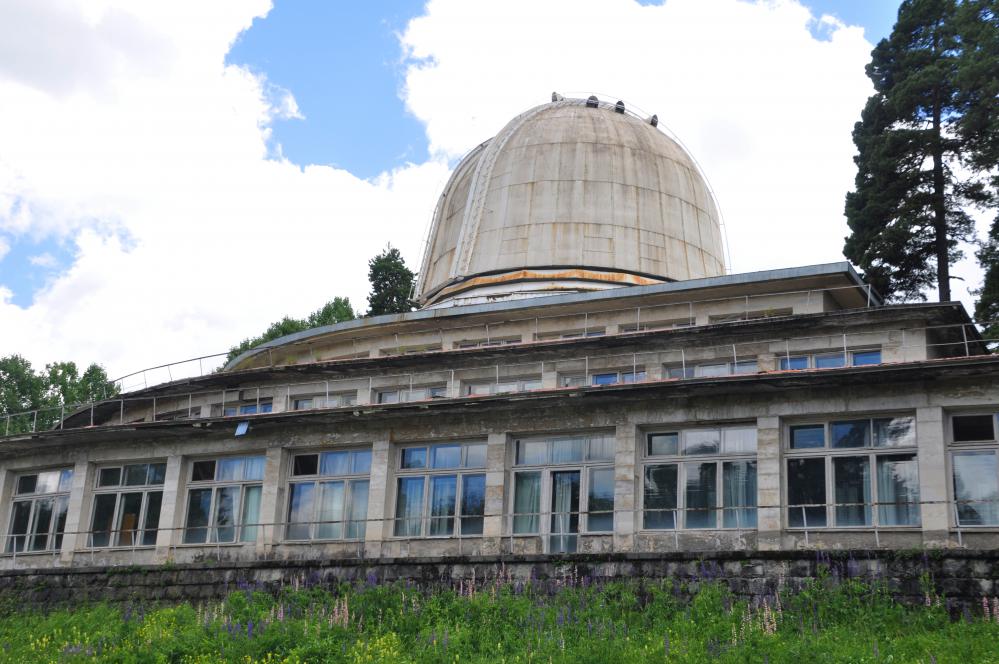
Fig. 1. Abastumani Astrophysical Observatory (*1932), Library, Lecture Hall, Dome of the 125cm-Ritchey-Chretien (Wikipedia 2, Sarah Murray)
The Abastumani Astrophysical Observatory, founded in 1932 by the Academian Evgeni Kirillovich Kharadze, is an institution of the Georgian Academy of Sciences. An observatory bulletin was already published since 1937.
The Abastumani Observatory is located 250 km from Tbilisi, the capital of Georgia, -- far enough from air pollution and artificial illumination -- a perfect dark sky with excellent atmospheric conditions. The Observatory is on Mount Kanobili in the Caucasus at an altitude of 1650m near the town of Abastumani and was the first high mountain observatory in the Soviet Union.
Back in 1892, a first mountain temporary observatory was erected by the University of St. Petersburg. Sergey Pavlovich Glazenap (1848--1937) observed close binary systems using a 9-inch-refractor.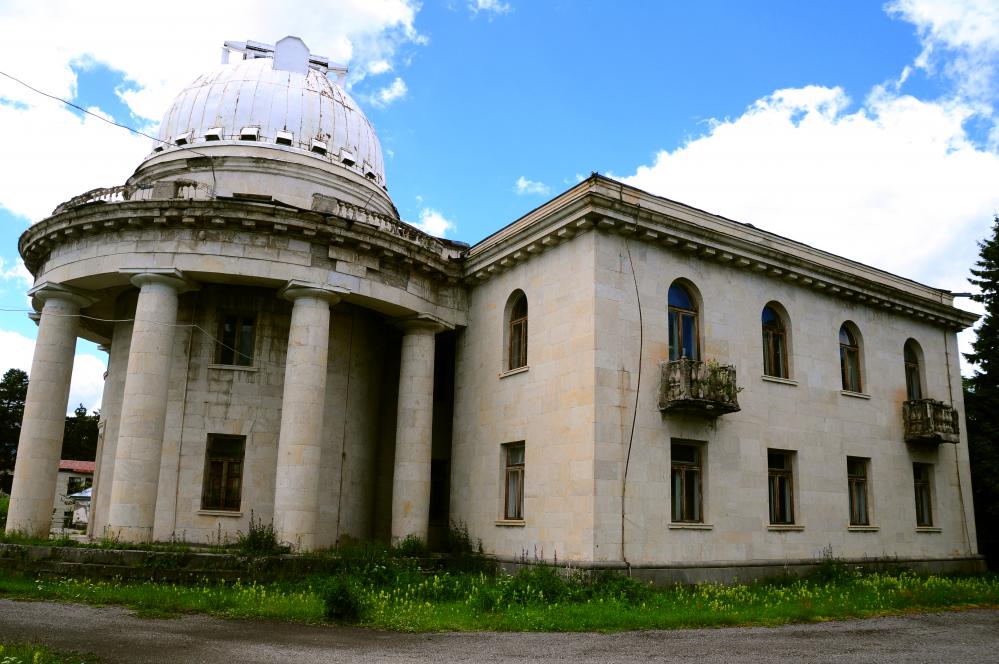
Fig. 2. Abastumani Astrophysical Observatory (*1932), Dome of the 70-cm-Maksutov (Wikipedia 2, Sarah Murray)
Observatory Directors
- 1932 to 1992 -- Evgeny Kirillovich Kharadze (1907--2001),
he headed the observatory for 60 years, and acted as an honorary director from 1992 to 2001. - 1992 to 2006 -- Rolan Ilyich Kiladze
- 2006 to today -- Georgy (Gia) Javakhishvili
History - InfoTheme: Astronomy from the Renaissance to the mid-twentieth century
Entity: 179
Subentity: 1
Version: 9
Status: PUB
Date: 2021-04-18 15:42:30
Author(s): Gudrun Wolfschmidt
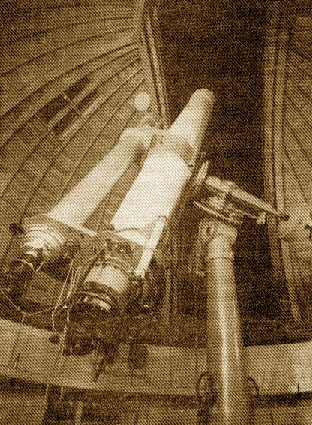
Fig. 3a. 40-cm-Zeiss-Refractor (© Abastumani Astrophysical Observatory)
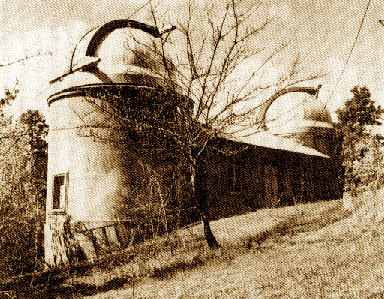
Fig. 3b. Domes of the 36-cm-Zeiss-Schmidt Camera and 33-cm-Reflector (© Abastumani Astrophysical Observatory)
Original Instruments
- 33-cm-Reflector (1932), now in the Museum of GENAO
- 40-cm-Refractor, Carl Zeiss of Jena (1936)
- 36cm / 44-cm-Schmidt Camera, Carl Zeiss of Jena (1940)
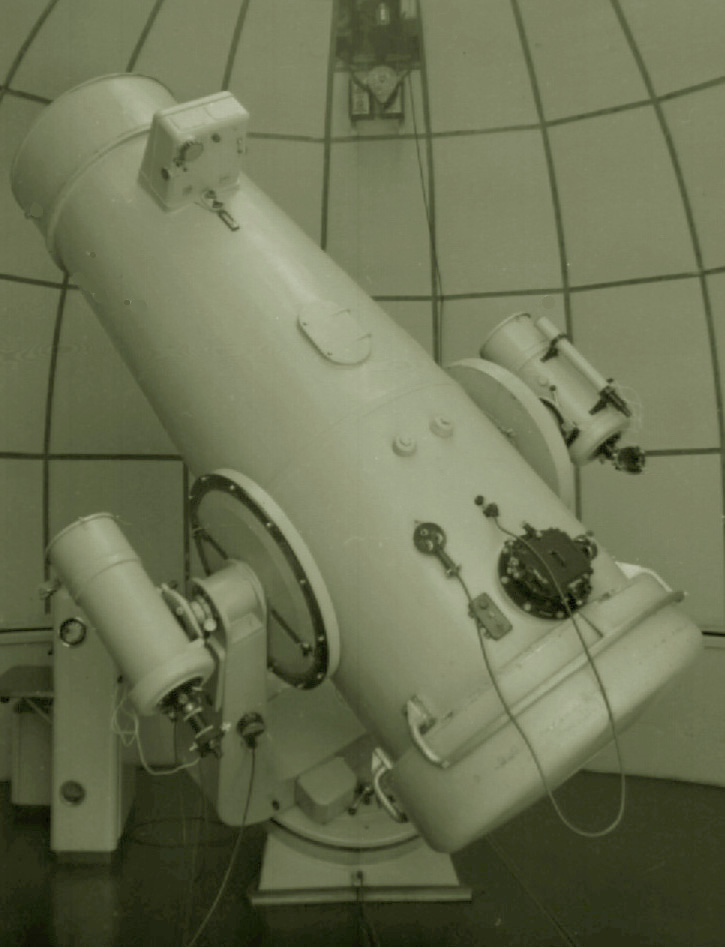
Fig. 4. 70-cm-Maksutov (© Abastumani Astrophysical Observatory)
- 70-cm-Meniscus Telescope (1955/56) (main mirror 975mm, The 70-cm-meniscus is made of a transparent UV crown glass for a near ultraviolet, 1:3, focal length 210cm), photographic plates 18x18cm, 4°x4° field of view. A 725-mm-lens is placed in front of the meniscus at an angle of rotation of 8°. With an objective lens prism, star spectra with a dispersion of 160 Å/mm are obtained.
- 48-cm-Cassegrain Reflector (1968)
Modern Instruments since the 1970s
- 40-cm-Double Astrograph, Carl Zeiss of Jena (1978)
- 125-cm-Ritchey-Chrétien Reflector (1977)
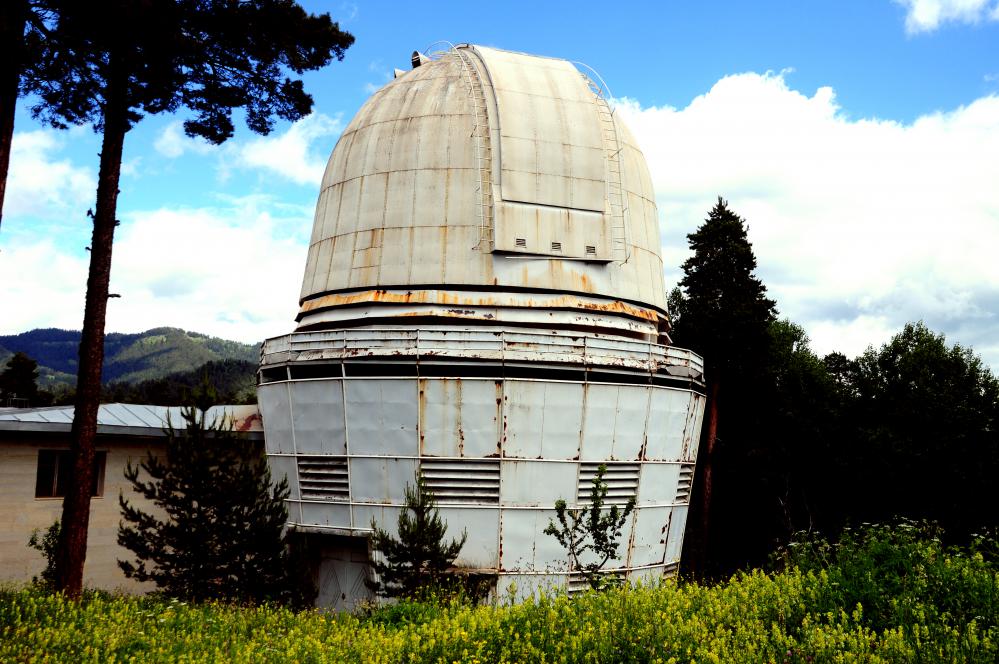
Fig. 5a. Dome of the 125-cm-Ritchey-Chrétien Reflector (Wikipedia 2, Sarah Murray))

Fig. 5b. 125-cm-Ritchey-Chrétien Reflector (1977) (© Abastumani Astrophysical Observatory)
Solar Physics Instruments
- Solar Telescopes
- 52-cm-Coronograph
State of preservation - InfoTheme: Astronomy from the Renaissance to the mid-twentieth century
Entity: 179
Subentity: 1
Version: 3
Status: PUB
Date: 2021-04-18 15:30:21
Author(s): Gudrun Wolfschmidt
The original buildings and instruments are completely preserved.
The instruments are in good condition, but the buildings really need restoration.
Comparison with related/similar sites - InfoTheme: Astronomy from the Renaissance to the mid-twentieth century
Entity: 179
Subentity: 1
Version: 1
Status: PUB
Date: 2021-04-05 01:46:38
Author(s): Gudrun Wolfschmidt
no information available
Threats or potential threats - InfoTheme: Astronomy from the Renaissance to the mid-twentieth century
Entity: 179
Subentity: 1
Version: 2
Status: PUB
Date: 2021-04-05 03:12:58
Author(s): Gudrun Wolfschmidt
no threats
Present use - InfoTheme: Astronomy from the Renaissance to the mid-twentieth century
Entity: 179
Subentity: 1
Version: 2
Status: PUB
Date: 2021-04-05 03:13:17
Author(s): Gudrun Wolfschmidt
The Observatory is still active in astrophysical research.
Astronomical relevance today - InfoTheme: Astronomy from the Renaissance to the mid-twentieth century
Entity: 179
Subentity: 1
Version: 2
Status: PUB
Date: 2021-04-05 03:13:47
Author(s): Gudrun Wolfschmidt
Main research topics are the following: the structure and evolution of galaxies, variable stars, the Sun and the solar system, investigations of the upper layers of Earth’s atmosphere, and the history of astronomy. Since 2000 exists the Center for Plasma Astrophysics.
References
Bibliography (books and published articles) - InfoTheme: Astronomy from the Renaissance to the mid-twentieth century
Entity: 179
Subentity: 1
Version: 2
Status: PUB
Date: 2021-04-05 03:14:10
Author(s): Gudrun Wolfschmidt
- Salukvadze, G.N.: The Abastumani Astrophysical Observatory on Mount Kanobili. Tbilisi 1975.
Links to external sites - InfoTheme: Astronomy from the Renaissance to the mid-twentieth century
Entity: 179
Subentity: 1
Version: 2
Status: PUB
Date: 2021-04-05 03:16:37
Author(s): Gudrun Wolfschmidt
Links to external on-line pictures - InfoTheme: Astronomy from the Renaissance to the mid-twentieth century
Entity: 179
Subentity: 1
Version: 1
Status: PUB
Date: 2021-04-05 01:46:39
Author(s): Gudrun Wolfschmidt
no information available
PrintPrint contents of 'Description' tab
(opens in a new window) Theme
Astronomy from the Renaissance to the mid-twentieth century
Case Study Navigation
- InfoTheme: Astronomy from the Renaissance to the mid-twentieth century
Entity: 179
Subentity: 1
Version: 2
Status: PUB
Date: 2021-04-05 03:07:17
Author(s): Gudrun Wolfschmidt
Abastumani Georgian National Astrophysical Observatory (GENAO), Georgia
Location - InfoTheme: Astronomy from the Renaissance to the mid-twentieth century
Entity: 179
Subentity: 1
Version: 2
Status: PUB
Date: 2021-04-05 03:07:50
Author(s): Gudrun Wolfschmidt
Latitude 41°45’15’’ N, Longitude 42°49’10’’ E, Elevation 1650m above mean sea level.
IAU observatory code - InfoTheme: Astronomy from the Renaissance to the mid-twentieth century
Entity: 179
Subentity: 1
Version: 1
Status: PUB
Date: 2021-04-05 01:46:38
Author(s): Gudrun Wolfschmidt
119
Description of (scientific/cultural/natural) heritage - InfoTheme: Astronomy from the Renaissance to the mid-twentieth century
Entity: 179
Subentity: 1
Version: 3
Status: PUB
Date: 2021-04-05 03:09:28
Author(s): Gudrun Wolfschmidt

Fig. 1. Abastumani Astrophysical Observatory (*1932), Library, Lecture Hall, Dome of the 125cm-Ritchey-Chretien (Wikipedia 2, Sarah Murray)
The Abastumani Astrophysical Observatory, founded in 1932 by the Academian Evgeni Kirillovich Kharadze, is an institution of the Georgian Academy of Sciences. An observatory bulletin was already published since 1937.
The Abastumani Observatory is located 250 km from Tbilisi, the capital of Georgia, -- far enough from air pollution and artificial illumination -- a perfect dark sky with excellent atmospheric conditions. The Observatory is on Mount Kanobili in the Caucasus at an altitude of 1650m near the town of Abastumani and was the first high mountain observatory in the Soviet Union.
Back in 1892, a first mountain temporary observatory was erected by the University of St. Petersburg. Sergey Pavlovich Glazenap (1848--1937) observed close binary systems using a 9-inch-refractor.
Fig. 2. Abastumani Astrophysical Observatory (*1932), Dome of the 70-cm-Maksutov (Wikipedia 2, Sarah Murray)
Observatory Directors
- 1932 to 1992 -- Evgeny Kirillovich Kharadze (1907--2001),
he headed the observatory for 60 years, and acted as an honorary director from 1992 to 2001. - 1992 to 2006 -- Rolan Ilyich Kiladze
- 2006 to today -- Georgy (Gia) Javakhishvili
History - InfoTheme: Astronomy from the Renaissance to the mid-twentieth century
Entity: 179
Subentity: 1
Version: 9
Status: PUB
Date: 2021-04-18 15:42:30
Author(s): Gudrun Wolfschmidt

Fig. 3a. 40-cm-Zeiss-Refractor (© Abastumani Astrophysical Observatory)

Fig. 3b. Domes of the 36-cm-Zeiss-Schmidt Camera and 33-cm-Reflector (© Abastumani Astrophysical Observatory)
Original Instruments
- 33-cm-Reflector (1932), now in the Museum of GENAO
- 40-cm-Refractor, Carl Zeiss of Jena (1936)
- 36cm / 44-cm-Schmidt Camera, Carl Zeiss of Jena (1940)

Fig. 4. 70-cm-Maksutov (© Abastumani Astrophysical Observatory)
- 70-cm-Meniscus Telescope (1955/56) (main mirror 975mm, The 70-cm-meniscus is made of a transparent UV crown glass for a near ultraviolet, 1:3, focal length 210cm), photographic plates 18x18cm, 4°x4° field of view. A 725-mm-lens is placed in front of the meniscus at an angle of rotation of 8°. With an objective lens prism, star spectra with a dispersion of 160 Å/mm are obtained.
- 48-cm-Cassegrain Reflector (1968)
Modern Instruments since the 1970s
- 40-cm-Double Astrograph, Carl Zeiss of Jena (1978)
- 125-cm-Ritchey-Chrétien Reflector (1977)

Fig. 5a. Dome of the 125-cm-Ritchey-Chrétien Reflector (Wikipedia 2, Sarah Murray))

Fig. 5b. 125-cm-Ritchey-Chrétien Reflector (1977) (© Abastumani Astrophysical Observatory)
Solar Physics Instruments
- Solar Telescopes
- 52-cm-Coronograph
State of preservation - InfoTheme: Astronomy from the Renaissance to the mid-twentieth century
Entity: 179
Subentity: 1
Version: 3
Status: PUB
Date: 2021-04-18 15:30:21
Author(s): Gudrun Wolfschmidt
The original buildings and instruments are completely preserved.
The instruments are in good condition, but the buildings really need restoration.
Comparison with related/similar sites - InfoTheme: Astronomy from the Renaissance to the mid-twentieth century
Entity: 179
Subentity: 1
Version: 1
Status: PUB
Date: 2021-04-05 01:46:38
Author(s): Gudrun Wolfschmidt
no information available
Threats or potential threats - InfoTheme: Astronomy from the Renaissance to the mid-twentieth century
Entity: 179
Subentity: 1
Version: 2
Status: PUB
Date: 2021-04-05 03:12:58
Author(s): Gudrun Wolfschmidt
no threats
Present use - InfoTheme: Astronomy from the Renaissance to the mid-twentieth century
Entity: 179
Subentity: 1
Version: 2
Status: PUB
Date: 2021-04-05 03:13:17
Author(s): Gudrun Wolfschmidt
The Observatory is still active in astrophysical research.
Astronomical relevance today - InfoTheme: Astronomy from the Renaissance to the mid-twentieth century
Entity: 179
Subentity: 1
Version: 2
Status: PUB
Date: 2021-04-05 03:13:47
Author(s): Gudrun Wolfschmidt
Main research topics are the following: the structure and evolution of galaxies, variable stars, the Sun and the solar system, investigations of the upper layers of Earth’s atmosphere, and the history of astronomy. Since 2000 exists the Center for Plasma Astrophysics.
References
Bibliography (books and published articles) - InfoTheme: Astronomy from the Renaissance to the mid-twentieth century
Entity: 179
Subentity: 1
Version: 2
Status: PUB
Date: 2021-04-05 03:14:10
Author(s): Gudrun Wolfschmidt
- Salukvadze, G.N.: The Abastumani Astrophysical Observatory on Mount Kanobili. Tbilisi 1975.
Links to external sites - InfoTheme: Astronomy from the Renaissance to the mid-twentieth century
Entity: 179
Subentity: 1
Version: 2
Status: PUB
Date: 2021-04-05 03:16:37
Author(s): Gudrun Wolfschmidt
Links to external on-line pictures - InfoTheme: Astronomy from the Renaissance to the mid-twentieth century
Entity: 179
Subentity: 1
Version: 1
Status: PUB
Date: 2021-04-05 01:46:39
Author(s): Gudrun Wolfschmidt
no information available
PrintPrint contents of 'Description' tab
(opens in a new window) Theme
Astronomy from the Renaissance to the mid-twentieth century
Case Study Navigation
- InfoTheme: Astronomy from the Renaissance to the mid-twentieth century
Entity: 179
Subentity: 1
Version: 2
Status: PUB
Date: 2021-04-05 03:07:50
Author(s): Gudrun Wolfschmidt
Latitude 41°45’15’’ N, Longitude 42°49’10’’ E, Elevation 1650m above mean sea level.
IAU observatory code - InfoTheme: Astronomy from the Renaissance to the mid-twentieth century
Entity: 179
Subentity: 1
Version: 1
Status: PUB
Date: 2021-04-05 01:46:38
Author(s): Gudrun Wolfschmidt
119
Description of (scientific/cultural/natural) heritage - InfoTheme: Astronomy from the Renaissance to the mid-twentieth century
Entity: 179
Subentity: 1
Version: 3
Status: PUB
Date: 2021-04-05 03:09:28
Author(s): Gudrun Wolfschmidt

Fig. 1. Abastumani Astrophysical Observatory (*1932), Library, Lecture Hall, Dome of the 125cm-Ritchey-Chretien (Wikipedia 2, Sarah Murray)
The Abastumani Astrophysical Observatory, founded in 1932 by the Academian Evgeni Kirillovich Kharadze, is an institution of the Georgian Academy of Sciences. An observatory bulletin was already published since 1937.
The Abastumani Observatory is located 250 km from Tbilisi, the capital of Georgia, -- far enough from air pollution and artificial illumination -- a perfect dark sky with excellent atmospheric conditions. The Observatory is on Mount Kanobili in the Caucasus at an altitude of 1650m near the town of Abastumani and was the first high mountain observatory in the Soviet Union.
Back in 1892, a first mountain temporary observatory was erected by the University of St. Petersburg. Sergey Pavlovich Glazenap (1848--1937) observed close binary systems using a 9-inch-refractor.
Fig. 2. Abastumani Astrophysical Observatory (*1932), Dome of the 70-cm-Maksutov (Wikipedia 2, Sarah Murray)
Observatory Directors
- 1932 to 1992 -- Evgeny Kirillovich Kharadze (1907--2001),
he headed the observatory for 60 years, and acted as an honorary director from 1992 to 2001. - 1992 to 2006 -- Rolan Ilyich Kiladze
- 2006 to today -- Georgy (Gia) Javakhishvili
History - InfoTheme: Astronomy from the Renaissance to the mid-twentieth century
Entity: 179
Subentity: 1
Version: 9
Status: PUB
Date: 2021-04-18 15:42:30
Author(s): Gudrun Wolfschmidt

Fig. 3a. 40-cm-Zeiss-Refractor (© Abastumani Astrophysical Observatory)

Fig. 3b. Domes of the 36-cm-Zeiss-Schmidt Camera and 33-cm-Reflector (© Abastumani Astrophysical Observatory)
Original Instruments
- 33-cm-Reflector (1932), now in the Museum of GENAO
- 40-cm-Refractor, Carl Zeiss of Jena (1936)
- 36cm / 44-cm-Schmidt Camera, Carl Zeiss of Jena (1940)

Fig. 4. 70-cm-Maksutov (© Abastumani Astrophysical Observatory)
- 70-cm-Meniscus Telescope (1955/56) (main mirror 975mm, The 70-cm-meniscus is made of a transparent UV crown glass for a near ultraviolet, 1:3, focal length 210cm), photographic plates 18x18cm, 4°x4° field of view. A 725-mm-lens is placed in front of the meniscus at an angle of rotation of 8°. With an objective lens prism, star spectra with a dispersion of 160 Å/mm are obtained.
- 48-cm-Cassegrain Reflector (1968)
Modern Instruments since the 1970s
- 40-cm-Double Astrograph, Carl Zeiss of Jena (1978)
- 125-cm-Ritchey-Chrétien Reflector (1977)

Fig. 5a. Dome of the 125-cm-Ritchey-Chrétien Reflector (Wikipedia 2, Sarah Murray))

Fig. 5b. 125-cm-Ritchey-Chrétien Reflector (1977) (© Abastumani Astrophysical Observatory)
Solar Physics Instruments
- Solar Telescopes
- 52-cm-Coronograph
State of preservation - InfoTheme: Astronomy from the Renaissance to the mid-twentieth century
Entity: 179
Subentity: 1
Version: 3
Status: PUB
Date: 2021-04-18 15:30:21
Author(s): Gudrun Wolfschmidt
The original buildings and instruments are completely preserved.
The instruments are in good condition, but the buildings really need restoration.
Comparison with related/similar sites - InfoTheme: Astronomy from the Renaissance to the mid-twentieth century
Entity: 179
Subentity: 1
Version: 1
Status: PUB
Date: 2021-04-05 01:46:38
Author(s): Gudrun Wolfschmidt
no information available
Threats or potential threats - InfoTheme: Astronomy from the Renaissance to the mid-twentieth century
Entity: 179
Subentity: 1
Version: 2
Status: PUB
Date: 2021-04-05 03:12:58
Author(s): Gudrun Wolfschmidt
no threats
Present use - InfoTheme: Astronomy from the Renaissance to the mid-twentieth century
Entity: 179
Subentity: 1
Version: 2
Status: PUB
Date: 2021-04-05 03:13:17
Author(s): Gudrun Wolfschmidt
The Observatory is still active in astrophysical research.
Astronomical relevance today - InfoTheme: Astronomy from the Renaissance to the mid-twentieth century
Entity: 179
Subentity: 1
Version: 2
Status: PUB
Date: 2021-04-05 03:13:47
Author(s): Gudrun Wolfschmidt
Main research topics are the following: the structure and evolution of galaxies, variable stars, the Sun and the solar system, investigations of the upper layers of Earth’s atmosphere, and the history of astronomy. Since 2000 exists the Center for Plasma Astrophysics.
References
Bibliography (books and published articles) - InfoTheme: Astronomy from the Renaissance to the mid-twentieth century
Entity: 179
Subentity: 1
Version: 2
Status: PUB
Date: 2021-04-05 03:14:10
Author(s): Gudrun Wolfschmidt
- Salukvadze, G.N.: The Abastumani Astrophysical Observatory on Mount Kanobili. Tbilisi 1975.
Links to external sites - InfoTheme: Astronomy from the Renaissance to the mid-twentieth century
Entity: 179
Subentity: 1
Version: 2
Status: PUB
Date: 2021-04-05 03:16:37
Author(s): Gudrun Wolfschmidt
Links to external on-line pictures - InfoTheme: Astronomy from the Renaissance to the mid-twentieth century
Entity: 179
Subentity: 1
Version: 1
Status: PUB
Date: 2021-04-05 01:46:39
Author(s): Gudrun Wolfschmidt
no information available
PrintPrint contents of 'Description' tab
(opens in a new window) Theme
Astronomy from the Renaissance to the mid-twentieth century
Case Study Navigation
- InfoTheme: Astronomy from the Renaissance to the mid-twentieth century
Entity: 179
Subentity: 1
Version: 1
Status: PUB
Date: 2021-04-05 01:46:38
Author(s): Gudrun Wolfschmidt
119
Description of (scientific/cultural/natural) heritage - InfoTheme: Astronomy from the Renaissance to the mid-twentieth century
Entity: 179
Subentity: 1
Version: 3
Status: PUB
Date: 2021-04-05 03:09:28
Author(s): Gudrun Wolfschmidt

Fig. 1. Abastumani Astrophysical Observatory (*1932), Library, Lecture Hall, Dome of the 125cm-Ritchey-Chretien (Wikipedia 2, Sarah Murray)
The Abastumani Astrophysical Observatory, founded in 1932 by the Academian Evgeni Kirillovich Kharadze, is an institution of the Georgian Academy of Sciences. An observatory bulletin was already published since 1937.
The Abastumani Observatory is located 250 km from Tbilisi, the capital of Georgia, -- far enough from air pollution and artificial illumination -- a perfect dark sky with excellent atmospheric conditions. The Observatory is on Mount Kanobili in the Caucasus at an altitude of 1650m near the town of Abastumani and was the first high mountain observatory in the Soviet Union.
Back in 1892, a first mountain temporary observatory was erected by the University of St. Petersburg. Sergey Pavlovich Glazenap (1848--1937) observed close binary systems using a 9-inch-refractor.
Fig. 2. Abastumani Astrophysical Observatory (*1932), Dome of the 70-cm-Maksutov (Wikipedia 2, Sarah Murray)
Observatory Directors
- 1932 to 1992 -- Evgeny Kirillovich Kharadze (1907--2001),
he headed the observatory for 60 years, and acted as an honorary director from 1992 to 2001. - 1992 to 2006 -- Rolan Ilyich Kiladze
- 2006 to today -- Georgy (Gia) Javakhishvili
History - InfoTheme: Astronomy from the Renaissance to the mid-twentieth century
Entity: 179
Subentity: 1
Version: 9
Status: PUB
Date: 2021-04-18 15:42:30
Author(s): Gudrun Wolfschmidt

Fig. 3a. 40-cm-Zeiss-Refractor (© Abastumani Astrophysical Observatory)

Fig. 3b. Domes of the 36-cm-Zeiss-Schmidt Camera and 33-cm-Reflector (© Abastumani Astrophysical Observatory)
Original Instruments
- 33-cm-Reflector (1932), now in the Museum of GENAO
- 40-cm-Refractor, Carl Zeiss of Jena (1936)
- 36cm / 44-cm-Schmidt Camera, Carl Zeiss of Jena (1940)

Fig. 4. 70-cm-Maksutov (© Abastumani Astrophysical Observatory)
- 70-cm-Meniscus Telescope (1955/56) (main mirror 975mm, The 70-cm-meniscus is made of a transparent UV crown glass for a near ultraviolet, 1:3, focal length 210cm), photographic plates 18x18cm, 4°x4° field of view. A 725-mm-lens is placed in front of the meniscus at an angle of rotation of 8°. With an objective lens prism, star spectra with a dispersion of 160 Å/mm are obtained.
- 48-cm-Cassegrain Reflector (1968)
Modern Instruments since the 1970s
- 40-cm-Double Astrograph, Carl Zeiss of Jena (1978)
- 125-cm-Ritchey-Chrétien Reflector (1977)

Fig. 5a. Dome of the 125-cm-Ritchey-Chrétien Reflector (Wikipedia 2, Sarah Murray))

Fig. 5b. 125-cm-Ritchey-Chrétien Reflector (1977) (© Abastumani Astrophysical Observatory)
Solar Physics Instruments
- Solar Telescopes
- 52-cm-Coronograph
State of preservation - InfoTheme: Astronomy from the Renaissance to the mid-twentieth century
Entity: 179
Subentity: 1
Version: 3
Status: PUB
Date: 2021-04-18 15:30:21
Author(s): Gudrun Wolfschmidt
The original buildings and instruments are completely preserved.
The instruments are in good condition, but the buildings really need restoration.
Comparison with related/similar sites - InfoTheme: Astronomy from the Renaissance to the mid-twentieth century
Entity: 179
Subentity: 1
Version: 1
Status: PUB
Date: 2021-04-05 01:46:38
Author(s): Gudrun Wolfschmidt
no information available
Threats or potential threats - InfoTheme: Astronomy from the Renaissance to the mid-twentieth century
Entity: 179
Subentity: 1
Version: 2
Status: PUB
Date: 2021-04-05 03:12:58
Author(s): Gudrun Wolfschmidt
no threats
Present use - InfoTheme: Astronomy from the Renaissance to the mid-twentieth century
Entity: 179
Subentity: 1
Version: 2
Status: PUB
Date: 2021-04-05 03:13:17
Author(s): Gudrun Wolfschmidt
The Observatory is still active in astrophysical research.
Astronomical relevance today - InfoTheme: Astronomy from the Renaissance to the mid-twentieth century
Entity: 179
Subentity: 1
Version: 2
Status: PUB
Date: 2021-04-05 03:13:47
Author(s): Gudrun Wolfschmidt
Main research topics are the following: the structure and evolution of galaxies, variable stars, the Sun and the solar system, investigations of the upper layers of Earth’s atmosphere, and the history of astronomy. Since 2000 exists the Center for Plasma Astrophysics.
References
Bibliography (books and published articles) - InfoTheme: Astronomy from the Renaissance to the mid-twentieth century
Entity: 179
Subentity: 1
Version: 2
Status: PUB
Date: 2021-04-05 03:14:10
Author(s): Gudrun Wolfschmidt
- Salukvadze, G.N.: The Abastumani Astrophysical Observatory on Mount Kanobili. Tbilisi 1975.
Links to external sites - InfoTheme: Astronomy from the Renaissance to the mid-twentieth century
Entity: 179
Subentity: 1
Version: 2
Status: PUB
Date: 2021-04-05 03:16:37
Author(s): Gudrun Wolfschmidt
Links to external on-line pictures - InfoTheme: Astronomy from the Renaissance to the mid-twentieth century
Entity: 179
Subentity: 1
Version: 1
Status: PUB
Date: 2021-04-05 01:46:39
Author(s): Gudrun Wolfschmidt
no information available
PrintPrint contents of 'Description' tab
(opens in a new window) Theme
Astronomy from the Renaissance to the mid-twentieth century
Case Study Navigation
- InfoTheme: Astronomy from the Renaissance to the mid-twentieth century
Entity: 179
Subentity: 1
Version: 3
Status: PUB
Date: 2021-04-05 03:09:28
Author(s): Gudrun Wolfschmidt

Fig. 1. Abastumani Astrophysical Observatory (*1932), Library, Lecture Hall, Dome of the 125cm-Ritchey-Chretien (Wikipedia 2, Sarah Murray)
The Abastumani Astrophysical Observatory, founded in 1932 by the Academian Evgeni Kirillovich Kharadze, is an institution of the Georgian Academy of Sciences. An observatory bulletin was already published since 1937.
The Abastumani Observatory is located 250 km from Tbilisi, the capital of Georgia, -- far enough from air pollution and artificial illumination -- a perfect dark sky with excellent atmospheric conditions. The Observatory is on Mount Kanobili in the Caucasus at an altitude of 1650m near the town of Abastumani and was the first high mountain observatory in the Soviet Union.
Back in 1892, a first mountain temporary observatory was erected by the University of St. Petersburg. Sergey Pavlovich Glazenap (1848--1937) observed close binary systems using a 9-inch-refractor.
Fig. 2. Abastumani Astrophysical Observatory (*1932), Dome of the 70-cm-Maksutov (Wikipedia 2, Sarah Murray)
Observatory Directors
- 1932 to 1992 -- Evgeny Kirillovich Kharadze (1907--2001),
he headed the observatory for 60 years, and acted as an honorary director from 1992 to 2001. - 1992 to 2006 -- Rolan Ilyich Kiladze
- 2006 to today -- Georgy (Gia) Javakhishvili
History - InfoTheme: Astronomy from the Renaissance to the mid-twentieth century
Entity: 179
Subentity: 1
Version: 9
Status: PUB
Date: 2021-04-18 15:42:30
Author(s): Gudrun Wolfschmidt

Fig. 3a. 40-cm-Zeiss-Refractor (© Abastumani Astrophysical Observatory)

Fig. 3b. Domes of the 36-cm-Zeiss-Schmidt Camera and 33-cm-Reflector (© Abastumani Astrophysical Observatory)
Original Instruments
- 33-cm-Reflector (1932), now in the Museum of GENAO
- 40-cm-Refractor, Carl Zeiss of Jena (1936)
- 36cm / 44-cm-Schmidt Camera, Carl Zeiss of Jena (1940)

Fig. 4. 70-cm-Maksutov (© Abastumani Astrophysical Observatory)
- 70-cm-Meniscus Telescope (1955/56) (main mirror 975mm, The 70-cm-meniscus is made of a transparent UV crown glass for a near ultraviolet, 1:3, focal length 210cm), photographic plates 18x18cm, 4°x4° field of view. A 725-mm-lens is placed in front of the meniscus at an angle of rotation of 8°. With an objective lens prism, star spectra with a dispersion of 160 Å/mm are obtained.
- 48-cm-Cassegrain Reflector (1968)
Modern Instruments since the 1970s
- 40-cm-Double Astrograph, Carl Zeiss of Jena (1978)
- 125-cm-Ritchey-Chrétien Reflector (1977)

Fig. 5a. Dome of the 125-cm-Ritchey-Chrétien Reflector (Wikipedia 2, Sarah Murray))

Fig. 5b. 125-cm-Ritchey-Chrétien Reflector (1977) (© Abastumani Astrophysical Observatory)
Solar Physics Instruments
- Solar Telescopes
- 52-cm-Coronograph
State of preservation - InfoTheme: Astronomy from the Renaissance to the mid-twentieth century
Entity: 179
Subentity: 1
Version: 3
Status: PUB
Date: 2021-04-18 15:30:21
Author(s): Gudrun Wolfschmidt
The original buildings and instruments are completely preserved.
The instruments are in good condition, but the buildings really need restoration.
Comparison with related/similar sites - InfoTheme: Astronomy from the Renaissance to the mid-twentieth century
Entity: 179
Subentity: 1
Version: 1
Status: PUB
Date: 2021-04-05 01:46:38
Author(s): Gudrun Wolfschmidt
no information available
Threats or potential threats - InfoTheme: Astronomy from the Renaissance to the mid-twentieth century
Entity: 179
Subentity: 1
Version: 2
Status: PUB
Date: 2021-04-05 03:12:58
Author(s): Gudrun Wolfschmidt
no threats
Present use - InfoTheme: Astronomy from the Renaissance to the mid-twentieth century
Entity: 179
Subentity: 1
Version: 2
Status: PUB
Date: 2021-04-05 03:13:17
Author(s): Gudrun Wolfschmidt
The Observatory is still active in astrophysical research.
Astronomical relevance today - InfoTheme: Astronomy from the Renaissance to the mid-twentieth century
Entity: 179
Subentity: 1
Version: 2
Status: PUB
Date: 2021-04-05 03:13:47
Author(s): Gudrun Wolfschmidt
Main research topics are the following: the structure and evolution of galaxies, variable stars, the Sun and the solar system, investigations of the upper layers of Earth’s atmosphere, and the history of astronomy. Since 2000 exists the Center for Plasma Astrophysics.
References
Bibliography (books and published articles) - InfoTheme: Astronomy from the Renaissance to the mid-twentieth century
Entity: 179
Subentity: 1
Version: 2
Status: PUB
Date: 2021-04-05 03:14:10
Author(s): Gudrun Wolfschmidt
- Salukvadze, G.N.: The Abastumani Astrophysical Observatory on Mount Kanobili. Tbilisi 1975.
Links to external sites - InfoTheme: Astronomy from the Renaissance to the mid-twentieth century
Entity: 179
Subentity: 1
Version: 2
Status: PUB
Date: 2021-04-05 03:16:37
Author(s): Gudrun Wolfschmidt
Links to external on-line pictures - InfoTheme: Astronomy from the Renaissance to the mid-twentieth century
Entity: 179
Subentity: 1
Version: 1
Status: PUB
Date: 2021-04-05 01:46:39
Author(s): Gudrun Wolfschmidt
no information available
PrintPrint contents of 'Description' tab
(opens in a new window) Theme
Astronomy from the Renaissance to the mid-twentieth century
Case Study Navigation
- InfoTheme: Astronomy from the Renaissance to the mid-twentieth century
Entity: 179
Subentity: 1
Version: 9
Status: PUB
Date: 2021-04-18 15:42:30
Author(s): Gudrun Wolfschmidt

Fig. 3a. 40-cm-Zeiss-Refractor (© Abastumani Astrophysical Observatory)

Fig. 3b. Domes of the 36-cm-Zeiss-Schmidt Camera and 33-cm-Reflector (© Abastumani Astrophysical Observatory)
Original Instruments
- 33-cm-Reflector (1932), now in the Museum of GENAO
- 40-cm-Refractor, Carl Zeiss of Jena (1936)
- 36cm / 44-cm-Schmidt Camera, Carl Zeiss of Jena (1940)

Fig. 4. 70-cm-Maksutov (© Abastumani Astrophysical Observatory)
- 70-cm-Meniscus Telescope (1955/56) (main mirror 975mm, The 70-cm-meniscus is made of a transparent UV crown glass for a near ultraviolet, 1:3, focal length 210cm), photographic plates 18x18cm, 4°x4° field of view. A 725-mm-lens is placed in front of the meniscus at an angle of rotation of 8°. With an objective lens prism, star spectra with a dispersion of 160 Å/mm are obtained.
- 48-cm-Cassegrain Reflector (1968)
Modern Instruments since the 1970s
- 40-cm-Double Astrograph, Carl Zeiss of Jena (1978)
- 125-cm-Ritchey-Chrétien Reflector (1977)

Fig. 5a. Dome of the 125-cm-Ritchey-Chrétien Reflector (Wikipedia 2, Sarah Murray))

Fig. 5b. 125-cm-Ritchey-Chrétien Reflector (1977) (© Abastumani Astrophysical Observatory)
Solar Physics Instruments
- Solar Telescopes
- 52-cm-Coronograph
State of preservation - InfoTheme: Astronomy from the Renaissance to the mid-twentieth century
Entity: 179
Subentity: 1
Version: 3
Status: PUB
Date: 2021-04-18 15:30:21
Author(s): Gudrun Wolfschmidt
The original buildings and instruments are completely preserved.
The instruments are in good condition, but the buildings really need restoration.
Comparison with related/similar sites - InfoTheme: Astronomy from the Renaissance to the mid-twentieth century
Entity: 179
Subentity: 1
Version: 1
Status: PUB
Date: 2021-04-05 01:46:38
Author(s): Gudrun Wolfschmidt
no information available
Threats or potential threats - InfoTheme: Astronomy from the Renaissance to the mid-twentieth century
Entity: 179
Subentity: 1
Version: 2
Status: PUB
Date: 2021-04-05 03:12:58
Author(s): Gudrun Wolfschmidt
no threats
Present use - InfoTheme: Astronomy from the Renaissance to the mid-twentieth century
Entity: 179
Subentity: 1
Version: 2
Status: PUB
Date: 2021-04-05 03:13:17
Author(s): Gudrun Wolfschmidt
The Observatory is still active in astrophysical research.
Astronomical relevance today - InfoTheme: Astronomy from the Renaissance to the mid-twentieth century
Entity: 179
Subentity: 1
Version: 2
Status: PUB
Date: 2021-04-05 03:13:47
Author(s): Gudrun Wolfschmidt
Main research topics are the following: the structure and evolution of galaxies, variable stars, the Sun and the solar system, investigations of the upper layers of Earth’s atmosphere, and the history of astronomy. Since 2000 exists the Center for Plasma Astrophysics.
References
Bibliography (books and published articles) - InfoTheme: Astronomy from the Renaissance to the mid-twentieth century
Entity: 179
Subentity: 1
Version: 2
Status: PUB
Date: 2021-04-05 03:14:10
Author(s): Gudrun Wolfschmidt
- Salukvadze, G.N.: The Abastumani Astrophysical Observatory on Mount Kanobili. Tbilisi 1975.
Links to external sites - InfoTheme: Astronomy from the Renaissance to the mid-twentieth century
Entity: 179
Subentity: 1
Version: 2
Status: PUB
Date: 2021-04-05 03:16:37
Author(s): Gudrun Wolfschmidt
Links to external on-line pictures - InfoTheme: Astronomy from the Renaissance to the mid-twentieth century
Entity: 179
Subentity: 1
Version: 1
Status: PUB
Date: 2021-04-05 01:46:39
Author(s): Gudrun Wolfschmidt
no information available
PrintPrint contents of 'Description' tab
(opens in a new window) Theme
Astronomy from the Renaissance to the mid-twentieth century
Case Study Navigation
- InfoTheme: Astronomy from the Renaissance to the mid-twentieth century
Entity: 179
Subentity: 1
Version: 3
Status: PUB
Date: 2021-04-18 15:30:21
Author(s): Gudrun Wolfschmidt
The original buildings and instruments are completely preserved.
The instruments are in good condition, but the buildings really need restoration.
Comparison with related/similar sites - InfoTheme: Astronomy from the Renaissance to the mid-twentieth century
Entity: 179
Subentity: 1
Version: 1
Status: PUB
Date: 2021-04-05 01:46:38
Author(s): Gudrun Wolfschmidt
no information available
Threats or potential threats - InfoTheme: Astronomy from the Renaissance to the mid-twentieth century
Entity: 179
Subentity: 1
Version: 2
Status: PUB
Date: 2021-04-05 03:12:58
Author(s): Gudrun Wolfschmidt
no threats
Present use - InfoTheme: Astronomy from the Renaissance to the mid-twentieth century
Entity: 179
Subentity: 1
Version: 2
Status: PUB
Date: 2021-04-05 03:13:17
Author(s): Gudrun Wolfschmidt
The Observatory is still active in astrophysical research.
Astronomical relevance today - InfoTheme: Astronomy from the Renaissance to the mid-twentieth century
Entity: 179
Subentity: 1
Version: 2
Status: PUB
Date: 2021-04-05 03:13:47
Author(s): Gudrun Wolfschmidt
Main research topics are the following: the structure and evolution of galaxies, variable stars, the Sun and the solar system, investigations of the upper layers of Earth’s atmosphere, and the history of astronomy. Since 2000 exists the Center for Plasma Astrophysics.
References
Bibliography (books and published articles) - InfoTheme: Astronomy from the Renaissance to the mid-twentieth century
Entity: 179
Subentity: 1
Version: 2
Status: PUB
Date: 2021-04-05 03:14:10
Author(s): Gudrun Wolfschmidt
- Salukvadze, G.N.: The Abastumani Astrophysical Observatory on Mount Kanobili. Tbilisi 1975.
Links to external sites - InfoTheme: Astronomy from the Renaissance to the mid-twentieth century
Entity: 179
Subentity: 1
Version: 2
Status: PUB
Date: 2021-04-05 03:16:37
Author(s): Gudrun Wolfschmidt
Links to external on-line pictures - InfoTheme: Astronomy from the Renaissance to the mid-twentieth century
Entity: 179
Subentity: 1
Version: 1
Status: PUB
Date: 2021-04-05 01:46:39
Author(s): Gudrun Wolfschmidt
no information available
PrintPrint contents of 'Description' tab
(opens in a new window) Theme
Astronomy from the Renaissance to the mid-twentieth century
Case Study Navigation
- InfoTheme: Astronomy from the Renaissance to the mid-twentieth century
Entity: 179
Subentity: 1
Version: 1
Status: PUB
Date: 2021-04-05 01:46:38
Author(s): Gudrun Wolfschmidt
no information available
Threats or potential threats - InfoTheme: Astronomy from the Renaissance to the mid-twentieth century
Entity: 179
Subentity: 1
Version: 2
Status: PUB
Date: 2021-04-05 03:12:58
Author(s): Gudrun Wolfschmidt
no threats
Present use - InfoTheme: Astronomy from the Renaissance to the mid-twentieth century
Entity: 179
Subentity: 1
Version: 2
Status: PUB
Date: 2021-04-05 03:13:17
Author(s): Gudrun Wolfschmidt
The Observatory is still active in astrophysical research.
Astronomical relevance today - InfoTheme: Astronomy from the Renaissance to the mid-twentieth century
Entity: 179
Subentity: 1
Version: 2
Status: PUB
Date: 2021-04-05 03:13:47
Author(s): Gudrun Wolfschmidt
Main research topics are the following: the structure and evolution of galaxies, variable stars, the Sun and the solar system, investigations of the upper layers of Earth’s atmosphere, and the history of astronomy. Since 2000 exists the Center for Plasma Astrophysics.
References
Bibliography (books and published articles) - InfoTheme: Astronomy from the Renaissance to the mid-twentieth century
Entity: 179
Subentity: 1
Version: 2
Status: PUB
Date: 2021-04-05 03:14:10
Author(s): Gudrun Wolfschmidt
- Salukvadze, G.N.: The Abastumani Astrophysical Observatory on Mount Kanobili. Tbilisi 1975.
Links to external sites - InfoTheme: Astronomy from the Renaissance to the mid-twentieth century
Entity: 179
Subentity: 1
Version: 2
Status: PUB
Date: 2021-04-05 03:16:37
Author(s): Gudrun Wolfschmidt
Links to external on-line pictures - InfoTheme: Astronomy from the Renaissance to the mid-twentieth century
Entity: 179
Subentity: 1
Version: 1
Status: PUB
Date: 2021-04-05 01:46:39
Author(s): Gudrun Wolfschmidt
no information available
PrintPrint contents of 'Description' tab
(opens in a new window) Theme
Astronomy from the Renaissance to the mid-twentieth century
Case Study Navigation
- InfoTheme: Astronomy from the Renaissance to the mid-twentieth century
Entity: 179
Subentity: 1
Version: 2
Status: PUB
Date: 2021-04-05 03:12:58
Author(s): Gudrun Wolfschmidt
no threats
Present use - InfoTheme: Astronomy from the Renaissance to the mid-twentieth century
Entity: 179
Subentity: 1
Version: 2
Status: PUB
Date: 2021-04-05 03:13:17
Author(s): Gudrun Wolfschmidt
The Observatory is still active in astrophysical research.
Astronomical relevance today - InfoTheme: Astronomy from the Renaissance to the mid-twentieth century
Entity: 179
Subentity: 1
Version: 2
Status: PUB
Date: 2021-04-05 03:13:47
Author(s): Gudrun Wolfschmidt
Main research topics are the following: the structure and evolution of galaxies, variable stars, the Sun and the solar system, investigations of the upper layers of Earth’s atmosphere, and the history of astronomy. Since 2000 exists the Center for Plasma Astrophysics.
References
Bibliography (books and published articles) - InfoTheme: Astronomy from the Renaissance to the mid-twentieth century
Entity: 179
Subentity: 1
Version: 2
Status: PUB
Date: 2021-04-05 03:14:10
Author(s): Gudrun Wolfschmidt
- Salukvadze, G.N.: The Abastumani Astrophysical Observatory on Mount Kanobili. Tbilisi 1975.
Links to external sites - InfoTheme: Astronomy from the Renaissance to the mid-twentieth century
Entity: 179
Subentity: 1
Version: 2
Status: PUB
Date: 2021-04-05 03:16:37
Author(s): Gudrun Wolfschmidt
Links to external on-line pictures - InfoTheme: Astronomy from the Renaissance to the mid-twentieth century
Entity: 179
Subentity: 1
Version: 1
Status: PUB
Date: 2021-04-05 01:46:39
Author(s): Gudrun Wolfschmidt
no information available
PrintPrint contents of 'Description' tab
(opens in a new window) Theme
Astronomy from the Renaissance to the mid-twentieth century
Case Study Navigation
- InfoTheme: Astronomy from the Renaissance to the mid-twentieth century
Entity: 179
Subentity: 1
Version: 2
Status: PUB
Date: 2021-04-05 03:13:17
Author(s): Gudrun Wolfschmidt
The Observatory is still active in astrophysical research.
Astronomical relevance today - InfoTheme: Astronomy from the Renaissance to the mid-twentieth century
Entity: 179
Subentity: 1
Version: 2
Status: PUB
Date: 2021-04-05 03:13:47
Author(s): Gudrun Wolfschmidt
Main research topics are the following: the structure and evolution of galaxies, variable stars, the Sun and the solar system, investigations of the upper layers of Earth’s atmosphere, and the history of astronomy. Since 2000 exists the Center for Plasma Astrophysics.
References
Bibliography (books and published articles) - InfoTheme: Astronomy from the Renaissance to the mid-twentieth century
Entity: 179
Subentity: 1
Version: 2
Status: PUB
Date: 2021-04-05 03:14:10
Author(s): Gudrun Wolfschmidt
- Salukvadze, G.N.: The Abastumani Astrophysical Observatory on Mount Kanobili. Tbilisi 1975.
Links to external sites - InfoTheme: Astronomy from the Renaissance to the mid-twentieth century
Entity: 179
Subentity: 1
Version: 2
Status: PUB
Date: 2021-04-05 03:16:37
Author(s): Gudrun Wolfschmidt
Links to external on-line pictures - InfoTheme: Astronomy from the Renaissance to the mid-twentieth century
Entity: 179
Subentity: 1
Version: 1
Status: PUB
Date: 2021-04-05 01:46:39
Author(s): Gudrun Wolfschmidt
no information available
PrintPrint contents of 'Description' tab
(opens in a new window) Theme
Astronomy from the Renaissance to the mid-twentieth century
Case Study Navigation
- InfoTheme: Astronomy from the Renaissance to the mid-twentieth century
Entity: 179
Subentity: 1
Version: 2
Status: PUB
Date: 2021-04-05 03:13:47
Author(s): Gudrun Wolfschmidt
Main research topics are the following: the structure and evolution of galaxies, variable stars, the Sun and the solar system, investigations of the upper layers of Earth’s atmosphere, and the history of astronomy. Since 2000 exists the Center for Plasma Astrophysics.
References
Bibliography (books and published articles) - InfoTheme: Astronomy from the Renaissance to the mid-twentieth century
Entity: 179
Subentity: 1
Version: 2
Status: PUB
Date: 2021-04-05 03:14:10
Author(s): Gudrun Wolfschmidt
- Salukvadze, G.N.: The Abastumani Astrophysical Observatory on Mount Kanobili. Tbilisi 1975.
Links to external sites - InfoTheme: Astronomy from the Renaissance to the mid-twentieth century
Entity: 179
Subentity: 1
Version: 2
Status: PUB
Date: 2021-04-05 03:16:37
Author(s): Gudrun Wolfschmidt
Links to external on-line pictures - InfoTheme: Astronomy from the Renaissance to the mid-twentieth century
Entity: 179
Subentity: 1
Version: 1
Status: PUB
Date: 2021-04-05 01:46:39
Author(s): Gudrun Wolfschmidt
no information available
PrintPrint contents of 'Description' tab
(opens in a new window) Theme
Astronomy from the Renaissance to the mid-twentieth century
Case Study Navigation
- InfoTheme: Astronomy from the Renaissance to the mid-twentieth century
Entity: 179
Subentity: 1
Version: 2
Status: PUB
Date: 2021-04-05 03:14:10
Author(s): Gudrun Wolfschmidt
- Salukvadze, G.N.: The Abastumani Astrophysical Observatory on Mount Kanobili. Tbilisi 1975.
Links to external sites - InfoTheme: Astronomy from the Renaissance to the mid-twentieth century
Entity: 179
Subentity: 1
Version: 2
Status: PUB
Date: 2021-04-05 03:16:37
Author(s): Gudrun Wolfschmidt
Links to external on-line pictures - InfoTheme: Astronomy from the Renaissance to the mid-twentieth century
Entity: 179
Subentity: 1
Version: 1
Status: PUB
Date: 2021-04-05 01:46:39
Author(s): Gudrun Wolfschmidt
no information available
PrintPrint contents of 'Description' tab
(opens in a new window) Theme
Astronomy from the Renaissance to the mid-twentieth century
Case Study Navigation
- InfoTheme: Astronomy from the Renaissance to the mid-twentieth century
Entity: 179
Subentity: 1
Version: 2
Status: PUB
Date: 2021-04-05 03:16:37
Author(s): Gudrun Wolfschmidt
Links to external on-line pictures - InfoTheme: Astronomy from the Renaissance to the mid-twentieth century
Entity: 179
Subentity: 1
Version: 1
Status: PUB
Date: 2021-04-05 01:46:39
Author(s): Gudrun Wolfschmidt
no information available
PrintPrint contents of 'Description' tab
(opens in a new window) Theme
Astronomy from the Renaissance to the mid-twentieth century
Case Study Navigation
- InfoTheme: Astronomy from the Renaissance to the mid-twentieth century
Entity: 179
Subentity: 1
Version: 1
Status: PUB
Date: 2021-04-05 01:46:39
Author(s): Gudrun Wolfschmidt
no information available
PrintPrint contents of 'Description' tab
(opens in a new window) Theme
(opens in a new window)
Astronomy from the Renaissance to the mid-twentieth century

